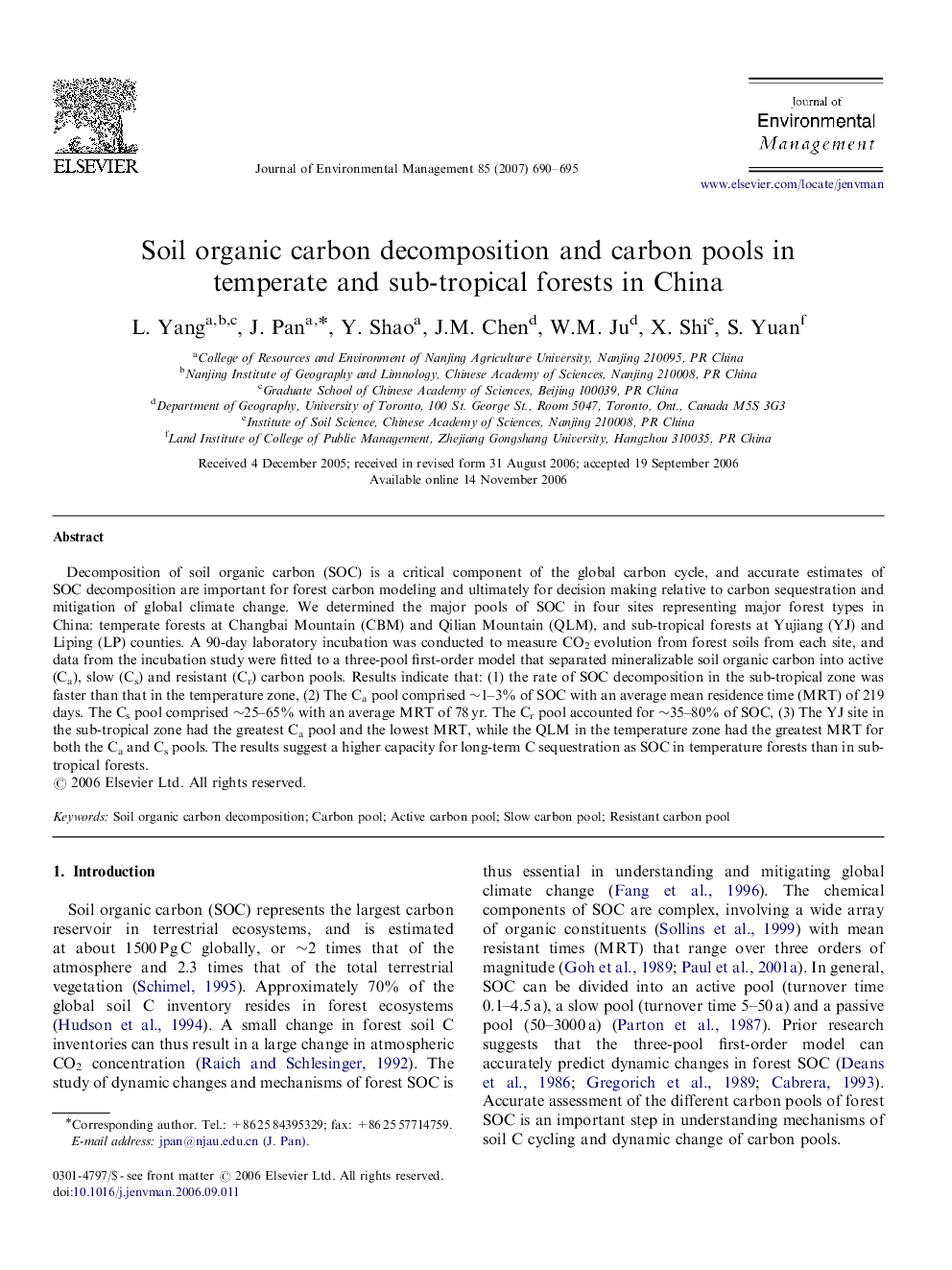| Article ID | Journal | Published Year | Pages | File Type |
|---|---|---|---|---|
| 1058686 | Journal of Environmental Management | 2007 | 6 Pages |
Decomposition of soil organic carbon (SOC) is a critical component of the global carbon cycle, and accurate estimates of SOC decomposition are important for forest carbon modeling and ultimately for decision making relative to carbon sequestration and mitigation of global climate change. We determined the major pools of SOC in four sites representing major forest types in China: temperate forests at Changbai Mountain (CBM) and Qilian Mountain (QLM), and sub-tropical forests at Yujiang (YJ) and Liping (LP) counties. A 90-day laboratory incubation was conducted to measure CO2 evolution from forest soils from each site, and data from the incubation study were fitted to a three-pool first-order model that separated mineralizable soil organic carbon into active (Ca), slow (Cs) and resistant (Cr) carbon pools. Results indicate that: (1) the rate of SOC decomposition in the sub-tropical zone was faster than that in the temperature zone, (2) The Ca pool comprised ∼1–3% of SOC with an average mean residence time (MRT) of 219 days. The Cs pool comprised ∼25–65% with an average MRT of 78 yr. The Cr pool accounted for ∼35–80% of SOC, (3) The YJ site in the sub-tropical zone had the greatest Ca pool and the lowest MRT, while the QLM in the temperature zone had the greatest MRT for both the Ca and Cs pools. The results suggest a higher capacity for long-term C sequestration as SOC in temperature forests than in sub-tropical forests.
